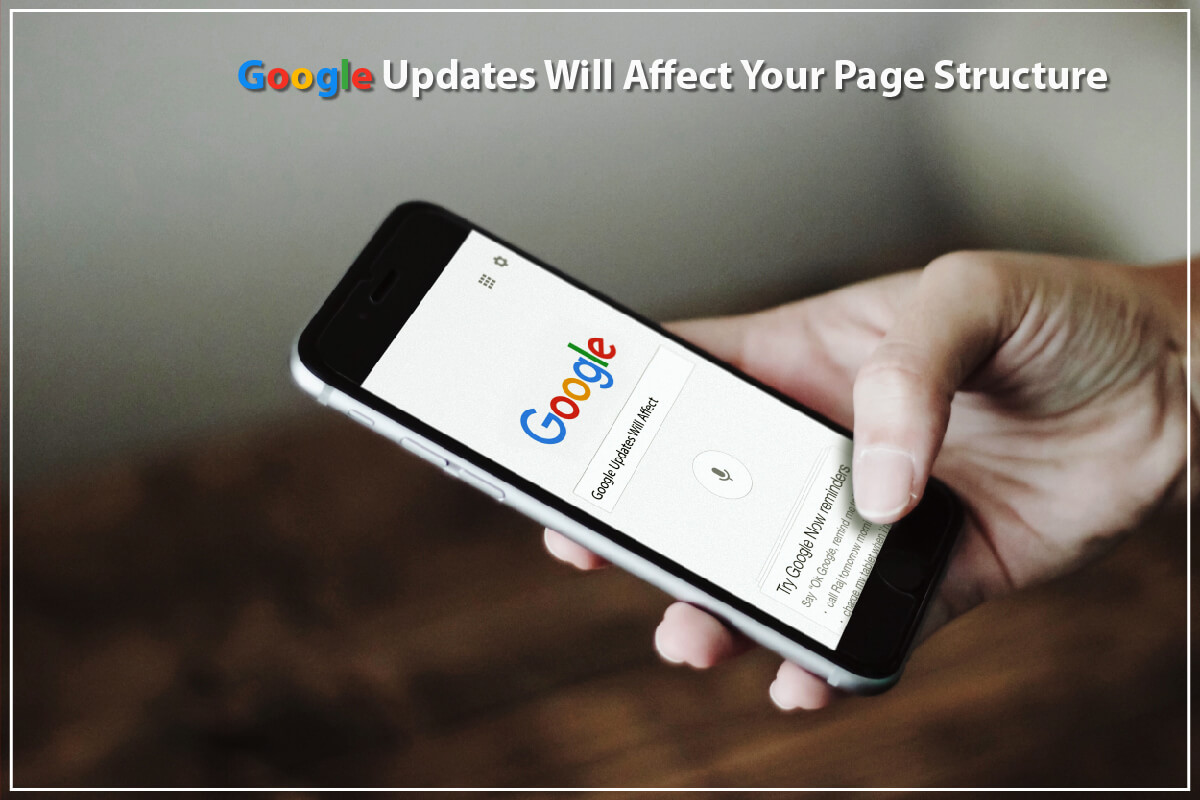How Google Updates Will Affect Your Page Structure

A large number of new websites perhaps even the devastating majority of them have started to take on a really recognizable look: there is a navigation bar at the top of the screen frequently converse in color to the rest of the page followed by a huge round of images, often some kind of revolting Google AdSense advertisements, and then finally, if we’re providential, there will be some actual content to read before we have to reach for the scroll wheel.
Google doesn’t like it!
Get Your Web Content Above The Wrinkle
The problem with making users have to scroll past these huge round of graphics at the top of the design, after perhaps waiting for it all to load, is that it unjustly take over the bounce rate analytics for your site. Those analytics are not just there to help you; they are also connected to the prescription Google uses to rank pages.
So if users seem to be remaining for a long time on your site, it makes your site appear to be more helpful and popular than it probably really is. On the other hand, sites that really do provide useful content may have their rank negatively affected by having a higher official bounce rate than your site.
As an outcome of recognizing this, Google is rewarding sites that actually do place useful content above the fold. It does not mean that they will take aggressive action against sites that do waste space at the top of the page, but there is an advantage to getting useful information presented as early as possible on the page so that users can quickly decide if your content is relevant to their needs.
This is another one of those inconsistencies that websites have created by failing to discourage clients from being copy-cats. Business owners are often short-sighted when it comes to understanding the importance of originality and there is a tendency to think that if a design (and sometimes even content) works at company X, it should be used at company Y as well.
Google Gets Serious About Mobile Support
Another thing that Google is now pushing quite aggressively is “mobile-friendliness”, which is actually just another word for responsive design. It could be argued that now Google is a browser vendor and OS vendor, they’ve lost neutrality, but that’s kind of beside the point. It’s their search engine and they make the rules.
When you manually index a site with Google these days, they will nag you constantly if they find that it needs more mobile-friendliness. This is not a bad thing… it’s good to know when improvement is possible, and to be given helpful advice on how to implement that improvement.
What would be a bad thing, however, is if Google insists that mobile-friendliness is compulsory, and imposes a ranking penalty for non-compliance. That would be a problem because not every site is intended to be viewed on a mobile device. The good news is that—for the moment at least—it doesn’t seem like Google will take that path.
Keep in mind that Google wants more people using Android, so they have a very strong incentive to try to make sure as many sites as possible are catering to the needs of Android users. Just to be on the safe side, it’s probably worth investing some time to create some extra columns in your grid that will be shown in place of your main content when displaying on a device that is below the minimum horizontal width that your main content can support.
What is clear is that Google updates is going to massively affect search results on a device-specific, location-specific level. So if your website isn’t supporting mobile devices, then you can expect users of those devices will not see your site listed above competitors in the search results.
Even though Google has said that it is not going to directly penalize sites who don’t provide “mobile-friendliness”, there are many reasons why I don’t think we can trust this advice.
The main one is that with Google potentially listing competing websites higher in search results on mobile devices, and with more people using mobile devices, we can expect to see the rankings of desktop-only sites fall through natural attrition. This means that more users going to competitor’s sites will cause Google to think that those sites are more popular than yours, even though Google provides the conditions under which that can happen.
What You Need To Do
These may seem like small changes, and for many designers they are not going to have a major impact, but you must not overlook the fact that the clients who will eventually own the websites don’t usually understand what it’s all about. They’ll make demands of you that go against what you know, and you will have to try to educate them.
While the following are basic best practices that everyone should already be doing without having to be hit with a stick by Google, the incredible majority of sites are not actually doing so, therefore it is necessary to spell out that the following things are what you should be doing when you create a new site:
- Always approach from a responsive design point-of-view
- Try to support all display types natively
- If you can’t do the above due to the nature of your content, use mobile-only columns
- When using mobile-only columns, show the users what they are missing!
- Use image round of appropriately
- Try to put at least some relevant content above the fold
- Stop using regurgitated templates.
Following the above steps is a good way to keep ahead of Google, but just as importantly also the best way to build any new website. Making these changes is the easy part.
Build Your Agile Team
Hire Skilled Developer From Us
undefined
undefined
undefinedOur Recent Blogs
Sharing knowledge helps us grow, stay motivated and stay on-track with frontier technological and design concepts. Developers and business innovators, customers and employees - our events are all about you.
Contact Information
Let’s Transform Your Idea into Reality - Get in Touch
India
Ahmedabad
1007-1010, Signature-1,
S.G.Highway, Makarba,
Ahmedabad, Gujarat - 380051
Rajkot
1308 - The Spire, 150 Feet Ring Rd,
Manharpura 1, Madhapar, Rajkot, Gujarat - 360007
UAE
Dubai
Dubai Silicon Oasis, DDP,
Building A1, Dubai, UAE
USA
Delaware
8 The Green, Dover DE, 19901, USA
New Jersey
513 Baldwin Ave, Jersey City,
NJ 07306, USA
California
4701 Patrick Henry Dr. Building
26 Santa Clara, California 95054
Australia
Queensland
120 Highgate Street, Coopers Plains, Brisbane, Queensland 4108
UK
London
85 Great Portland Street, First
Floor, London, W1W 7LT
Canada
Burlington
5096 South Service Rd,
ON Burlington, L7l 4X4





